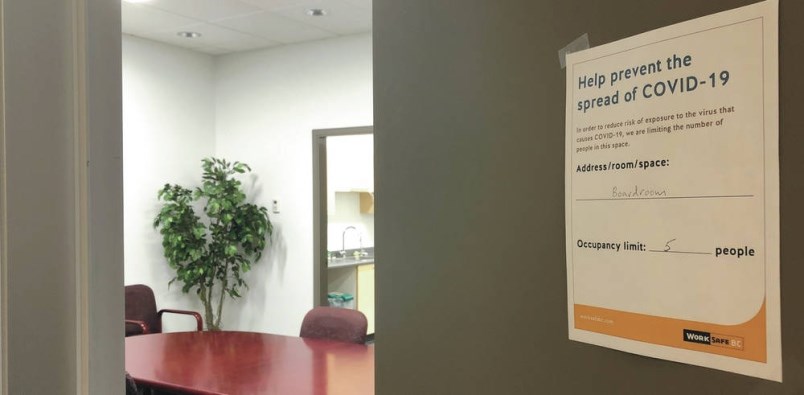The number of claims for worker’s compensation filed as a result of the COVID-19 pandemic has spiked since October, something that comes as no surprise to WorkSafeBC.
Tanya Houghton, WorkSafe’s director of special care services, said the significant increase in the number of COVID cases being reported in the fall and winter was bound to show up in claims data.
The surge in COVID cases in the fall and winter resulted in WorkSafe receiving 1,629 claims for compensation over the three months leading up to Jan. 8. In the previous seven months, WorkSafe received only 1,419 COVID-related claims.
Houghton said the number of claims filed with WorkSafe spiked last spring, died down through the summer and surged again in the fall and winter, mirroring what was happening with COVID cases around B.C.
“Our ratio has been pretty consistent,” she said, adding claims have gone up in areas where COVID cases have spiked. “I would be concerned if [COVID case] numbers showed one thing and our claims data showed something different.”
The largest group of claims, more than 1,800, has been filed by health care and social service workers who are on the front lines, which Houghton said was expected, since that’s where COVID cases are concentrated.
She said the organization had predicted between 2,500 and 3,000 cases by the end of the year.
Houghton noted that WorkSafe approved more claims in the last three months than it did during the first spike in the spring. In December alone, WorkSafe allowed 600 claims. As of Jan. 8, it had allowed 1,368 of the 3,048 claims filed over the last 10 months.
According to WorkSafe, claims are allowed when there is sufficient evidence to establish a worker has COVID-19 and the risk in the workplace is significantly higher than the ordinary exposure risk.
Claims are typically rejected when there is insufficient evidence to establish that the worker has COVID-19 or the worker was off work as a preventative measure.
Houghton said the increase in claim approvals is due to better understanding of who can apply for compensation — individuals must have been exposed to COVID — and what relief programs are available.
Most of those who applied for compensation after being told to self-isolate or quarantine last spring were not eligible, as they had not been exposed to the virus, Houghton said.
WorkSafe anticipates the number of claims to drop as vaccines roll out.
Houghton said there is a bit of a lag between COVID case numbers and claims data, so while case numbers may start to drop through the first quarter of this year, she doesn’t expect to see a noticeable change in claims until the second quarter.
“That also comes with better weather and more people getting outside,” she said. “We certainly hope to see a decline in the number of people getting sick.”
WorkSafe also saw a surge in violations of health orders over the winter.
According to figures released this week, as of Jan. 8, the government agency had received nearly 5,500 reports of potential COVID-related health and safety violations and issued 1,422 orders as a result. By the end of October, the agency had only issued 620 orders.
Since last spring, more than 430 orders have been issued for violations in the services sector, which includes restaurants and bars, with 325 handed out in the construction industry and 300 in the retail and wholesale trade sector.
In total, WorkSafe has conducted 21,302 workplace inspections during the pandemic, more than 7,940 of them in the services sector, with 4,478 inspections done in construction and 4,488 in the wholesale and retail trade sector.


